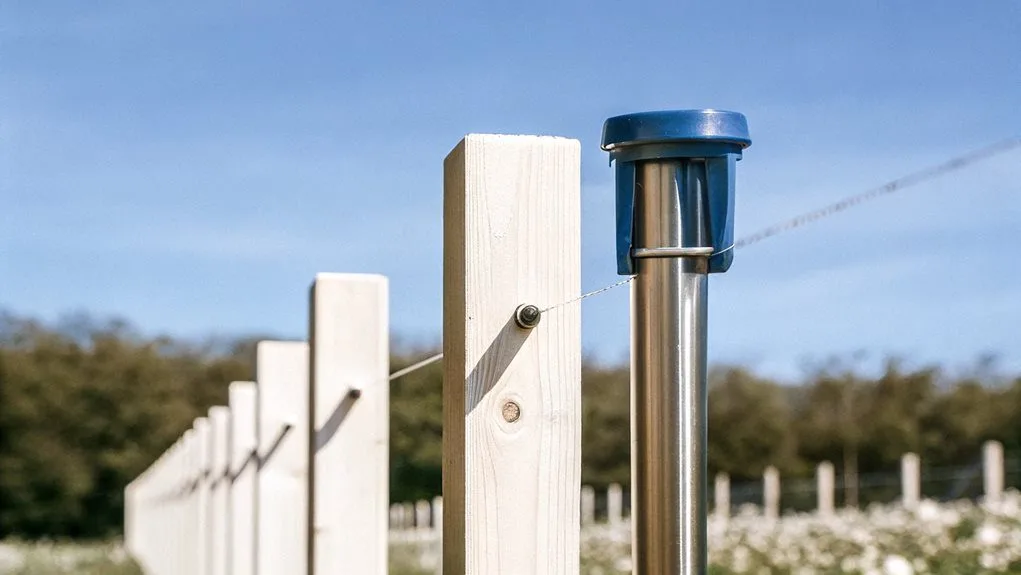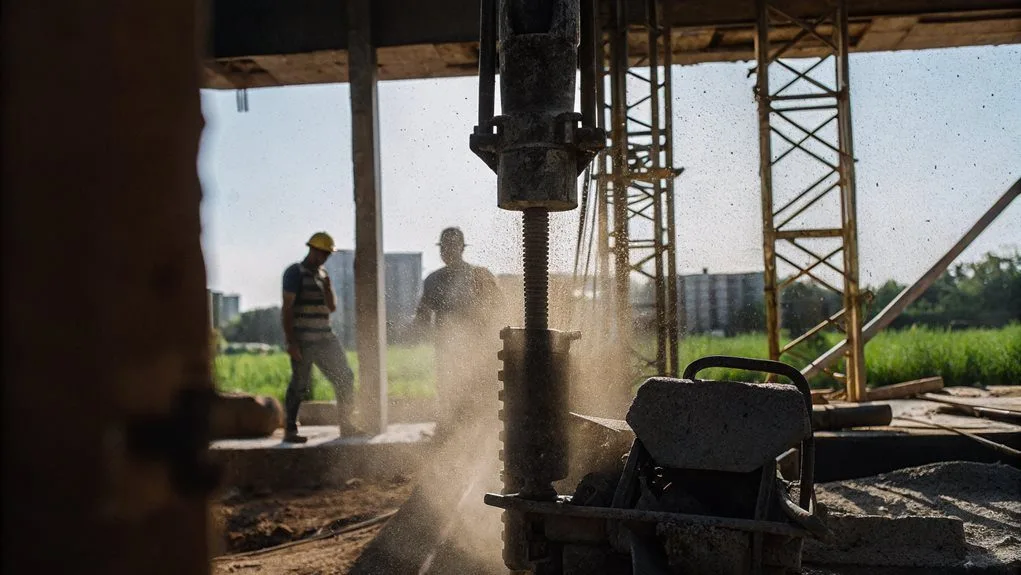Before you climb onto that loader, you must check several essential items. Do you really want to risk skipping the inspection of fuel levels, brakes, and tyre pressure? Safety should always be your top priority, so don’t forget your hard hat, gloves, and that seatbelt isn’t there for decoration. Keep your surroundings clear, adjust your speed accordingly, and communicate effectively with your crew; no one wants surprise accidents.
Operating a loader involves much more than simply revving the engine. Proper pre-operation checks, wearing appropriate personal protective equipment, and maintaining awareness of your work environment are crucial elements that can prevent serious incidents. Take the time to familiarise yourself with all safety protocols before beginning any loader operation.
Key Takeaways
- Conduct pre-operation inspections, including fluid levels and brakes, to ensure equipment is safe for use.
- Always wear the required personal protective equipment, such as hard hats and steel-toed boots.
- Familiarize yourself with the loader’s controls and communication protocols for safe operation.
- Maintain a clear work area to avoid hazards and inform colleagues before starting the machine.
- Adhere to Occupational Health and Safety Act regulations to ensure compliance and safety.
Pre-Operation Inspection Checklist
Before you even think about hopping into that loader and revving it up, you’ve got a whole checklist to tackle.
Before jumping into that loader, don’t skip the crucial checklist – it’s your first step to a successful and safe job.
You don’t want to be that person who finds out the engine oil’s low mid-job.
Check fluid levels: fuel, hydraulic oil, and coolant.
And for heaven’s sake, look for leaks.
Trust me; a puddle isn’t a good sign.
Next, let’s talk tyres.
Are they inflated?
No one wants a flat tyre to steal their thunder.
Then, there’s the controls.
Test your brakes – they should stop, not just complain.
Finally, make sure your ROPS and seatbelt are good to go.
Seriously, safety guards are your friends.
Additionally, consider going digital for efficiency in your pre-operation inspections.
So, get in gear and tick that checklist off.
You want to belong on the job site, right? Regularly reviewing your loader safety protocols ensures you’re operating within the best practices.
Safe Operation Practices
When you’re operating that loader, going too fast might land you in a heap of trouble—seriously, who wants to explain a crash? Keep an eye on your surroundings; those random obstacles have a knack for ruining your day. And hey, remember: a low bucket isn’t just about looking cool; it actually helps you stay upright while you traverse uneven terrain. Prioritizing wheel loader safety is essential to prevent accidents and protect yourself while on the job. Additionally, ensuring that you use appropriate personal protective equipment can significantly enhance your safety while operating machinery.
Speed and Movement Control
How fast is too fast when you’re driving a loader? Seriously, it’s not a race! You’ve got to adjust your speed based on the terrain.
If it’s rocky or sloped, slow it down, please. Sudden movements are a guaranteed way to meet the ground unexpectedly—definitely not the fun kind of accident.
Remember to keep your heavy load low; it’s not a balancing act, folks! Operator training helps you understand speed limitations and safe operational speeds. Additionally, always maintain good visibility to make informed decisions while navigating.
And those sharp turns? Yeah, let’s skip those, especially on a slope; no one wants to end up in a rider’s reality show.
Smooth operations are key, so treat those controls like your favourite video game—gentle, not frantic! Trust me, you want stability, not the thrill of that unexpected roller-coaster ride.
Surroundings Awareness and Caution
You might think you’re invincible on that loader, but let’s face it, the world around you doesn’t care.
Inspect the terrain—don’t let your loader turn into a stunt double on uneven ground. Properly assessing the hazards of terrain is essential to prevent tip-over incidents. Remember that workplace environmental risks include material-handling methods that can affect your safety.
Look out for those pesky overhead lines and other obstacles; you don’t want to be the one making headlines for being “that bloke.”
Weather? Yeah, it can mess with your visibility faster than you can say, “Where’d that bakkie go?”
Always wear high-visibility gear; don’t play hide and seek with your colleagues.
You’ve got reversing alarms for a reason—use them!
Keep your seatbelt on and make sure you know where the fire extinguisher is.
You’ve got this, right?
Personal Protective Equipment (PPE) Requirements
Alright, let’s talk about the gear you probably don’t think about until it’s too late.
You know, hard hats, steel-toed boots, and maybe even some knee pads for those “awkward” moments?
Keeping that PPE in tip-top shape isn’t just a suggestion—it’s the difference between a grueling day on the loader and a trip to the hospital.
Essential PPE Items
When you’re out there operating heavy loaders, you might think your skills are enough to keep you safe.
But come on, do you really want to risk it?
First up, hard hats are a must—no one wants a concussion from a rogue beam.
Your helmet needs to fit right, folks.
And those safety spectacles? They’re not just a fashion statement; they protect your eyes from flying debris, dust, and let’s face it, your clumsiness.
Don’t forget heavy-duty gloves—because who enjoys cuts and abrasions?
Oh, and steel-toed boots? Yeah, they’re mandatory unless you want to play footsie with heavy equipment.
Proper PPE Maintenance
Proper PPE maintenance is a lot like taking care of your beloved pet—neglect it, and you’ll regret it.
Seriously, who wants to get hurt because you couldn’t be bothered?
Start with a quick visual check.
Look for any damage—it’s not rocket science.
And hey, if it doesn’t fit or feel comfortable, what’re you doing? You wouldn’t walk a kilometre in shoes that pinch, right?
Follow the manufacturer’s care guidelines; they actually know what they’re talking about.
Keep things clean and store them dry—your gear doesn’t need a spa day, but it does need love.
And let’s not ignore scheduled replacements.
If you’re counting on that frayed helmet to protect you, you’re living on the edge—literally!
Work Area Safety Considerations
Before you even think about starting up that loader, let’s talk about your work area—because believe it or not, having a clear space is quite important.
Seriously, nothing gets a loader stuck like a pile of debris. So, clear those obstacles!
Designate paths too. You don’t want to do a victory lap around a power line, do you?
Light the area if you’re working in low light; it’s harder to spot hazards when you can’t see your own feet!
Oh, and let your colleagues know you’re about to start that machine up. No one likes surprises—unless it’s cake.
Keep an eye out for falling objects and pinch points. Your safety depends on it.
Got it? Brilliant!
Maintenance and Operator Training
Maintaining that loader isn’t just a suggestion—it’s a must if you want to avoid catastrophe.
Seriously, think it through.
You wouldn’t drive a car without checking the oil, right?
So, why skimp on cleaning and changing fluids?
We’re talking about keeping your machine—from radiator fins to filters—in top shape.
And let’s not forget about your training.
Familiarising yourself with controls isn’t just a good idea; it’s essential.
Ever tried steering a loader whilst panicking?
Yeah, it’s not pretty.
You also need to communicate with your team—safety isn’t a solo gig!
So, before you hop on that loader, make sure you’ve got the training and maintenance down.
It’s not just about getting the job done; it’s about getting it done safely—and without embarrassing mishaps.
Safety Regulations and Compliance
Regarding loader safety regulations, you can’t simply improvise.
Seriously, the Department of Employment and Labour isn’t handing out free passes.
You must adhere to the Occupational Health and Safety Act regulations, which means your loader requires seat belts and restraints—no excuses!
And what about those comprehensive safety manuals?
They aren’t merely decorative; you need them to keep everyone properly informed.
Remember those regular inspections?
Don’t skip them.
You wouldn’t ignore your vehicle’s service, would you?
Plus, equip yourself with hard hats and high-visibility vests; it isn’t a fashion show!
You can’t afford to overlook things like reversing alarms and properly adjusted mirrors.
So, are you ready to comply with the regulations, or what?
Safety isn’t just a suggestion; it’s compulsory.
Conclusion
So there you have it, folks. Loader safety isn’t a guessing game—it’s a necessity. You wouldn’t drive a car with no seatbelt, right? Keep that inspection checklist handy, don your PPE like it’s designer gear, and don’t skimp on training. Remember, a little caution goes a long way. It’s not rocket science, but it could save you from a heavyweight headache. Don’t be the one who learns safety the hard way; trust me, no one wants that story.






